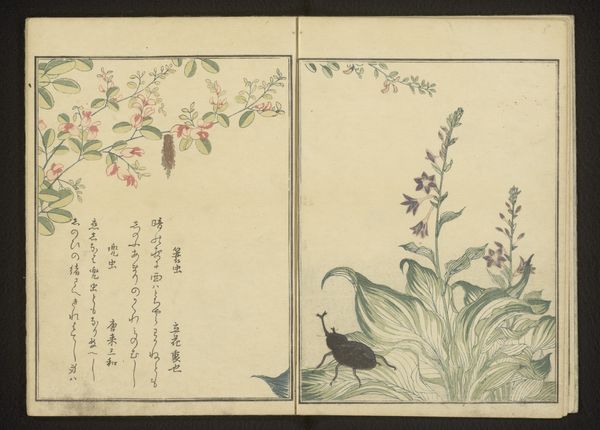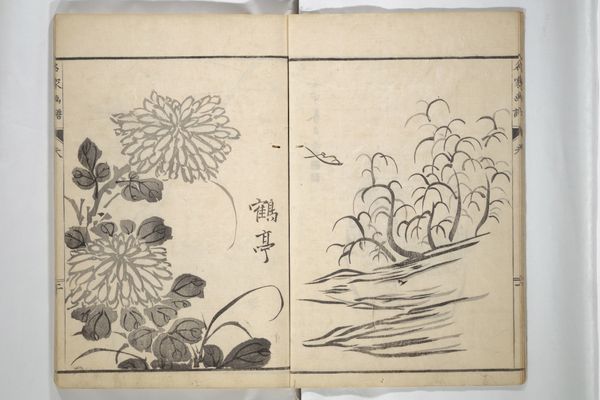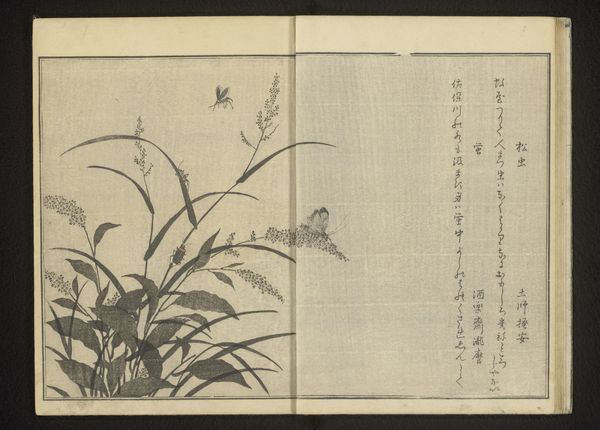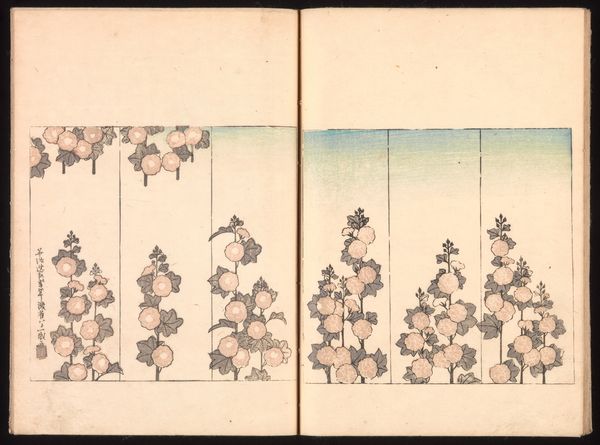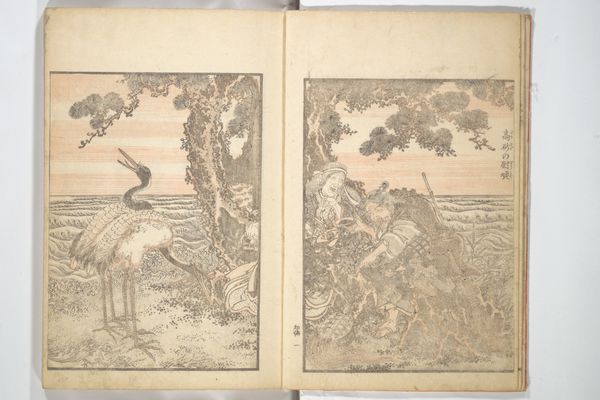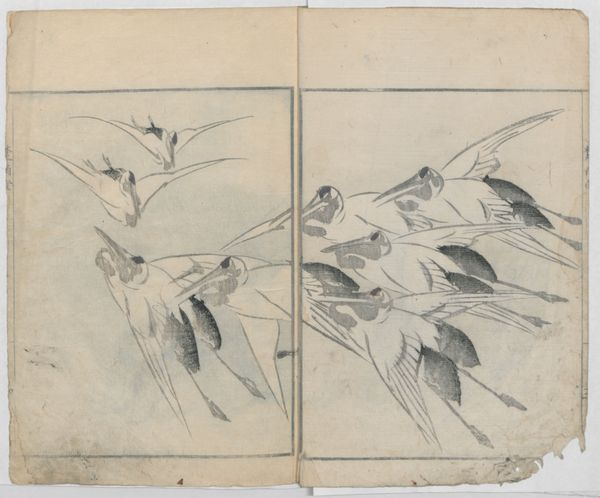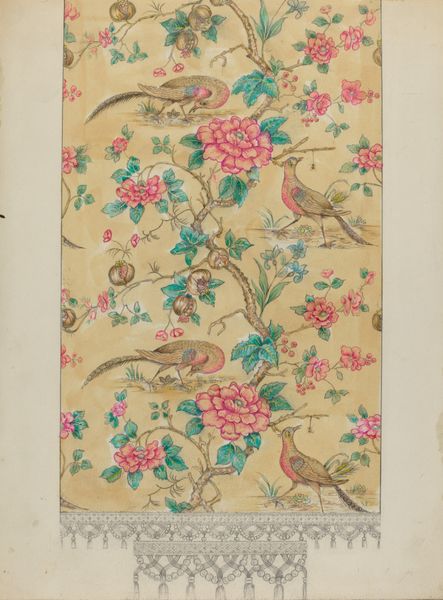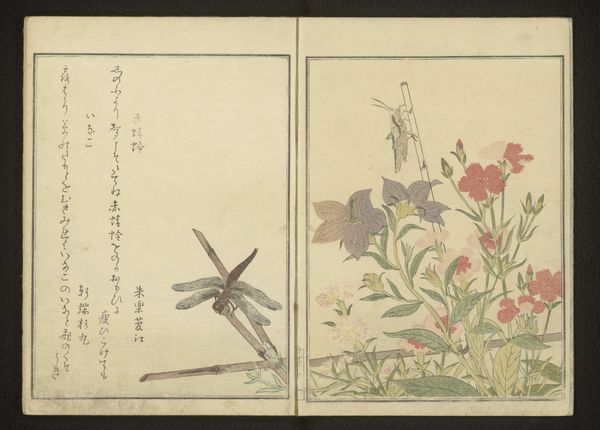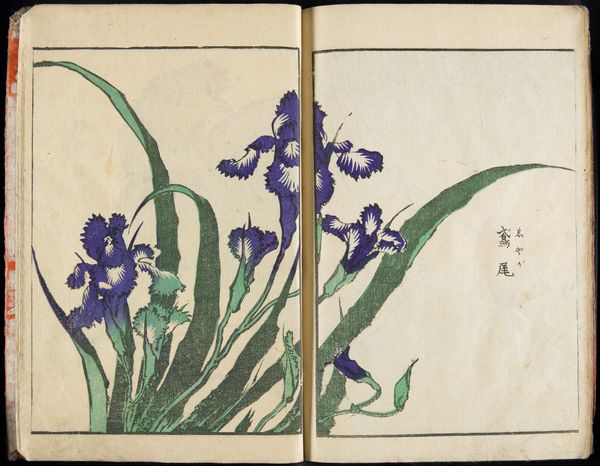
print, paper, woodblock-print
# print
#
asian-art
#
landscape
#
ukiyo-e
#
figuration
#
paper
#
woodblock-print
#
line
Dimensions: 5/16 x 5 15/16 x 8 3/4 in. (0.8 x 15.1 x 22.2 cm)
Copyright: Public Domain
Editor: Here we have "Pictures of Birds and Flowers vol. 1," a print made around 1848 by Katsushika Taito II. It's lovely. The two facing pages feature delicate flowers on one side and birds amidst foliage on the other. The limited color palette gives it a serene feeling. How do you interpret this work? Curator: This piece sits within the Ukiyo-e tradition, literally meaning "pictures of the floating world." Understanding that term is key. Consider what “the floating world” signified in Edo-period Japan – a focus on transient beauty, pleasure, and the natural world. Given that context, how might these birds and flowers have been received by the public? Editor: So, not just simple depictions of nature, but reflecting a broader cultural appreciation for fleeting beauty? I guess, viewed within that socio-political context, mass produced artworks depicting nature provided everyday citizens more intimate access to artworks. Curator: Precisely. These prints were affordable and accessible, distributed widely to reflect cultural values, bringing nature and beauty into the lives of ordinary people. Look closely at the composition - how does the artist frame the scenes, and what effect does that framing have? Editor: The borders neatly define the spaces, and the imagery contained inside seems purposefully flattened… It’s less about creating a realistic depiction, and more about offering a stylized representation. This was for widespread circulation, wasn't it? Meant to be easily reproduced? Curator: Yes, this piece's artistry lies not only in its aesthetic appeal but also in its role in shaping popular taste and making art a part of everyday life. Consider also the skill involved in the woodblock printing process, and the collaborative labor required. Does knowing that influence your perception? Editor: Definitely! The prints feel much more significant knowing they democratized art during the Edo period and were collaborative works. I initially focused on the imagery, but now appreciate their cultural importance. Curator: Exactly! Considering the public role of such pieces helps us understand its lasting impact.
Comments
No comments
Be the first to comment and join the conversation on the ultimate creative platform.

